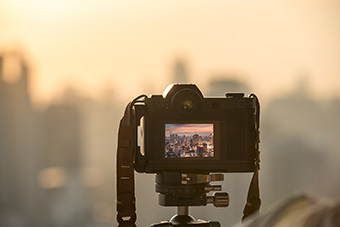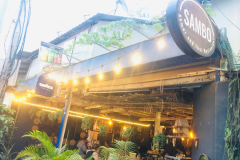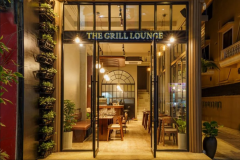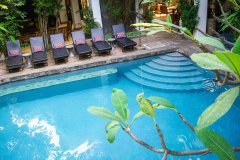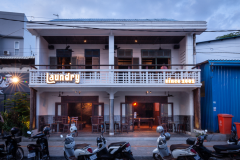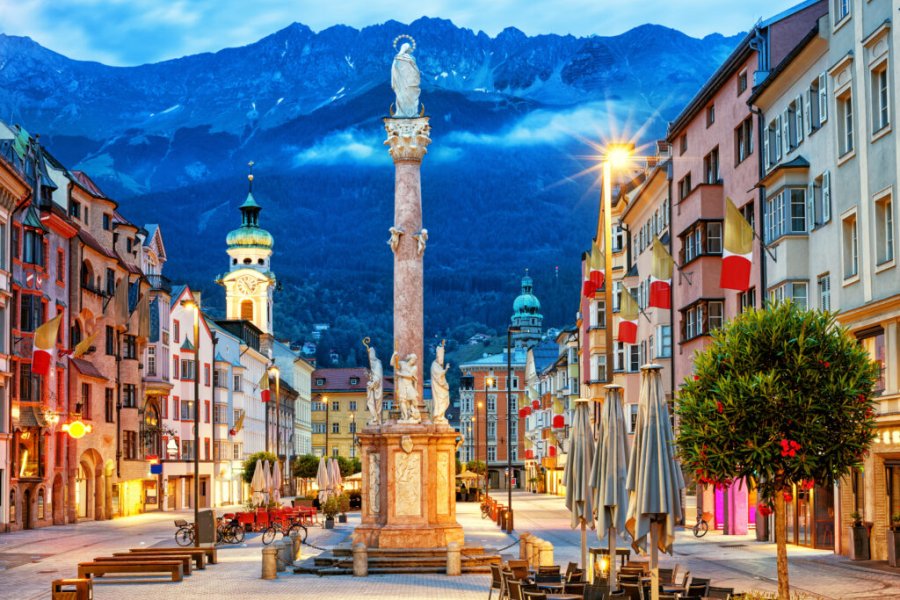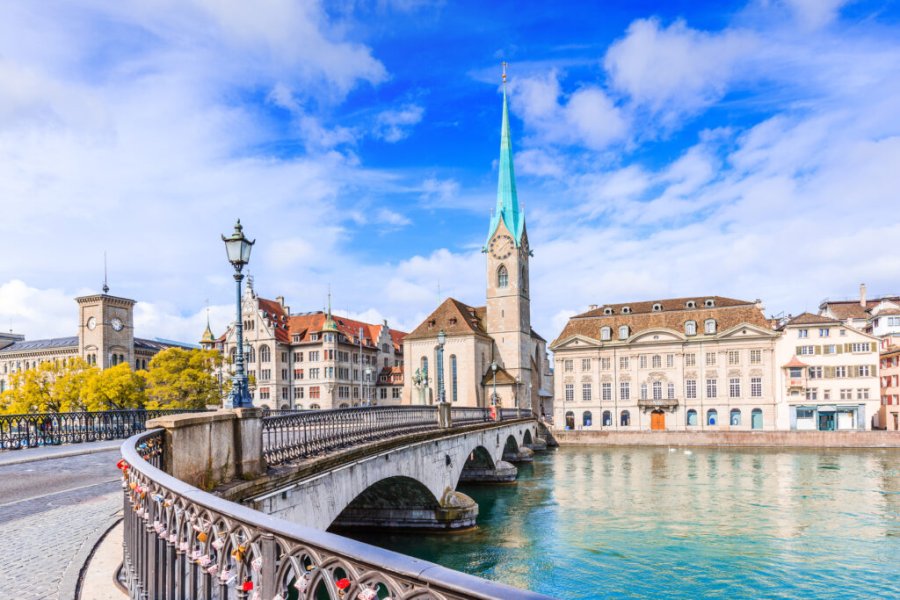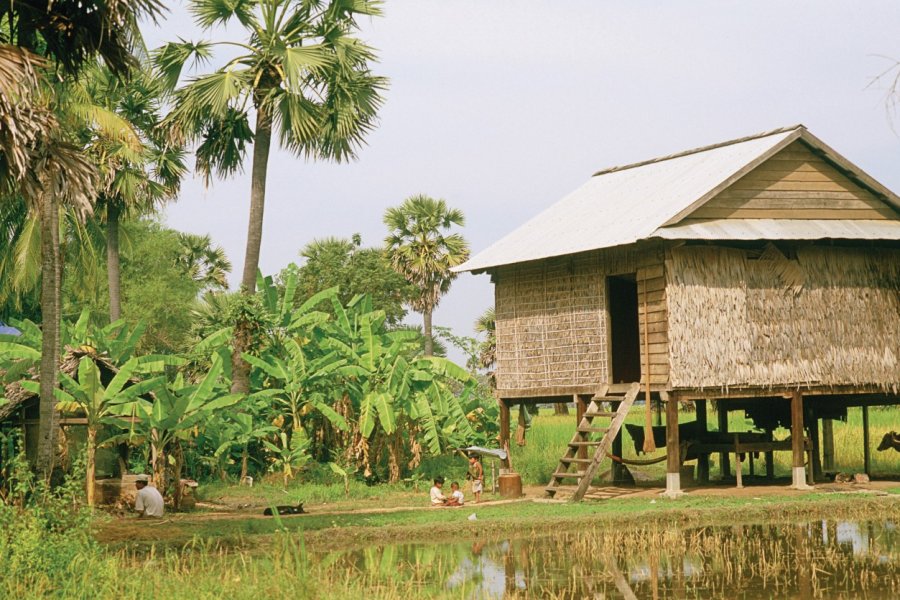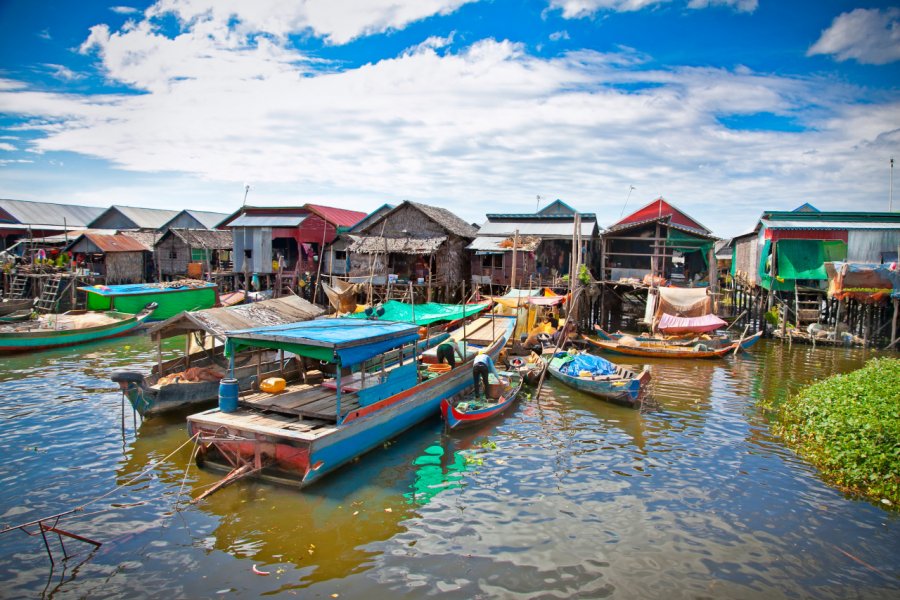Travel Guide Siem Reap
In the northwest of Cambodia, near the central lake Tonle Sap, Siem Reap attracts many tourists who come to admire the site ofAngkor, a remarkable testimony of Khmer civilization, its natural environment and its gastronomy. You will discover the unmatched flavors of the spicy green papaya salad, the traditional chicken dishes or the Amok, the national dish of Cambodia. In Siem Reap, the main attraction is the visit of the famous temples of Angkor, a city classified as a World Heritage Site, including the most famous of them,Angkok Wat(12th century), considered the eighth wonder of the world. In the natural heritage, there is the Tonle Sap Lake, the largest lake in Southeast Asia, which distills a special charm especially when you visit the floating village on its shores during the rainy season. The village is then flooded and you move by boat from one building to another. But to immerse yourself in the daily life of the locals and enjoy a colorful show and a really warm atmosphere, go to the markets. The Phsar Chas market is the most remarkable with an incredible variety of products on the stalls from river eels to mangosteens and other rambutans, not to mention many products imported from neighboring Thailand . Don't leave without your favorite travel guide.
What to visit Siem Reap?
Suggested addresses Siem Reap
When to go to Siem Reap?
When to go to Siem Reap? You can visit Siem Reap all year round, but the driest period is from November to March, so plan your stay at this time to avoid tropical rains and enjoy warm weather. The high tourist season is from November to February. There are few tourists in November, making this month the best time to visit Angkor. After that, it gets bad very quickly, the worst is by far the Chinese New Year when all Asia converges on the Khmer city. The advantage is that this period (especially December, January and February) is relatively cool, especially at night. The average tourist season is from March to May. It is perhaps the least pleasant period. It is very hot (the worst being in April), there is a lot of dust, and the tourist traffic in Angkor is not negligible. To be avoided. The low tourist season is from June to October. The rainy season is not what one often thinks: it rains (very hard) only a few hours a day and usually at the end of the day. The show is then superb, wherever you are. The rest of the time, it is hot. The end of the rainy season is one of the most beautiful: it almost doesn't rain anymore and everything is green and flowery, and there are not many tourists yet... The best time to stay in Siem Reap is therefore around October and November.
Weather at the moment
The region has a variable tropical climate. The climate of Cambodia, hot and humid, is conditioned by the action of the monsoons which determine the two seasons, dry (from November to the end of May) and wet (from the end of May to October). During the dry season, the weather in Siem Reap and Angkor is characterized by a beautiful sunshine and a mercury oscillating between 15 °C and 35 °C. In the middle of the rainy season, however, Siem Reap records average temperatures of 27 °C, which the monsoon can make feel higher.
Cambodia's population is mostly poor, but the cost of living for foreigners is higher than in other Asian countries. Thailand, which is more developed, is also cheaper. A stay in Siem Reap is relatively expensive: everything is organized so that tourists spend a maximum of money in a minimum of time. However, with advance planning and a bit of savvy, smart travelers can get away with a lot. Among the different types of temple tickets, a pass valid for three days and three nights spent in Siem Reap is to be preferred.
To go to Cambodia, and thus to Siem Reap and Angkor, a tourist visa will allow you to stay for one month. Theoretically, this Cambodian tourist visa should cost you 30 US$ upon arrival (32 US$ if you arrive without an ID photo, or 38 US$ if you opt for the e-visa on the Internet). These are the fees charged at the airports of Phnom Penh and Siem Reap (Angkor's neighboring city), but at the land border crossing, you will have to pay an average of 35 to 40 US$ (the civil servants are poorly paid...)! To avoid this kind of trickery, it may be preferable to obtain a visa beforehand.
If no vaccine is mandatory to go to Angkor or to enter Cambodia, some are nevertheless recommended. There are risks related to the environment, to insects and animals, to food and drink... Everything will depend on the type of trip you plan to make. If you decide to travel through the jungle, to sleep under the stars, to cross swamps or wild areas, we advise you in these cases and as a priority to vaccinate yourself against viral hepatitis A and B, diphtheria, tetanus, polio, typhoid, Japanese encephalitis (prolonged stay in rural areas) and rabies ("adventurous" circuit). As for drinking water in Angkor, it is preferable to bring mineral water bottles.
Practical information
- When to travel?
- Weather forecast
- Budget
- Formalities
- Health
- How to travel by yourself?
- How to get organized?
- Getting around
Media
How to go to Siem Reap? Our advice & tips
Siem Reap is a leading destination for tourism specialists in Southeast Asia. Cambodia is proposed by tour operators and travel agencies through different trips and themes: cultural, historical, discovery, trekking, relaxing stay. You will also be able to choose the formula that suits you, more specifically oriented on Angkor: accompanied tours, individual trips with a French-speaking driver-guide, itineraries to compose...
Discover our selection of travel agencies for this destinationAs long as you organize your stay alone, go during low season to benefit from flights half the price of high season. If you wish to land directly in Siem Reap, right next to Angkor, you will make a stopover in Phnom Penh. Please note that the price variation depends on the airline used but, above all, on the reservation delay. Same thing for the accommodation: anticipation means saving. Budget travelers will prefer hostels.
In Siem Reap and Angkor, you can travel by touk-touk, a comfortable two-seater covered carriage pulled by motorcycles, and motorcycle cab. It is forbidden for drivers to guide you in the temples just as it is forbidden for guides to serve as drivers. Each profession is thus protected. The electric bicycle is another option, rented by the day. The cab, which can be rented by the day as well. And finally, the car, authorized in the park.

